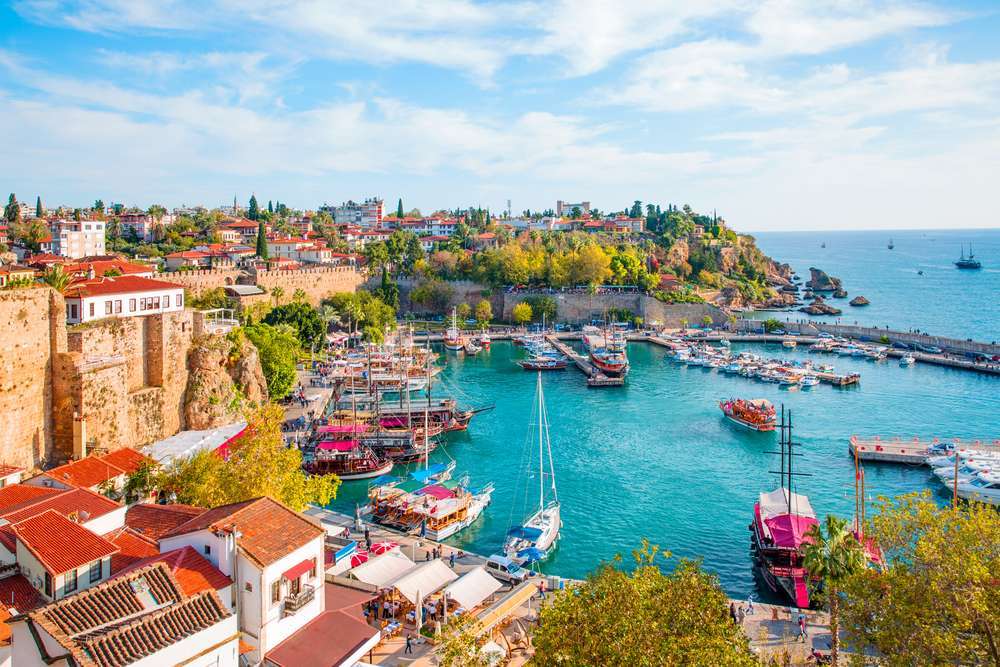Delhi, the sprawling capital city of India, is a treasure trove of history, culture, and architectural marvels. As the seat of empires and the canvas upon which centuries of stories have been woven, Delhi stands as a testament to the nation’s rich heritage. This article embarks on a journey through the heart of India, exploring the historical wonders of Delhi that narrate the captivating saga of the city’s past and present.
Red Fort: A Symbol of Mughal Grandeur
Standing majestically as a symbol of Mughal grandeur, the Red Fort, or Lal Qila, is an iconic monument that has witnessed centuries of Indian history. Built by Emperor Shah Jahan in the 17th century, the fort served as the main residence of the Mughal emperors for over 200 years. The intricate red sandstone walls, adorned with delicate white marble inlays, showcase the architectural finesse of the Mughal era. The fort’s Diwan-i-Khas (Hall of Private Audiences) and Diwan-i-Am (Hall of Public Audiences) provide a glimpse into the opulence of the Mughal courts.
INDIAN VISA FOR TIMORESE CITIZENS
Qutub Minar: A Towering Marvel of Ancient Engineering
The Qutub Minar, a UNESCO World Heritage Site, stands as an imposing testament to the grandeur of medieval India. Built by Qutb-ud-din Aibak in the 12th century, the minaret is the tallest brick minaret in the world. The intricate carvings on its surface tell the story of the victory of Qutb-ud-din over the last Hindu kingdom in Delhi. The Qutub Minar complex also features the Iron Pillar, a marvel of ancient engineering that has stood rust-free for over a millennium, leaving archaeologists puzzled about its metallurgical secrets.
Humayun’s Tomb: A Garden of Mughal Elegance
Commissioned by Empress Bega Begum for her husband Humayun, the Humayun’s Tomb is a masterpiece of Mughal architecture set in a sprawling charbagh (four-part) garden. The tomb’s Persian-inspired design served as a precursor to the Taj Mahal and is a serene retreat in the heart of Delhi. The intricate lattice work, delicate marble inlays, and the symmetrical layout of the gardens create an atmosphere of elegance and tranquility, making Humayun’s Tomb a must-visit historical gem.
India Gate: An Eternal Flame of Remembrance
India Gate, an iconic war memorial, stands as a solemn tribute to the soldiers who sacrificed their lives during World War I. Designed by Sir Edwin Lutyens, the arch-shaped monument is an impressive structure that evokes a sense of national pride. The Amar Jawan Jyoti, an eternal flame beneath the arch, symbolizes the sacrifice of Indian soldiers in subsequent wars. India Gate is not just a historical landmark but a vibrant public space, often bustling with locals and tourists alike.
Jama Masjid: India’s Largest Mosque
Jama Masjid, the largest mosque in India, is a magnificent architectural marvel that showcases the grandeur of Mughal religious architecture. Commissioned by Emperor Shah Jahan in the mid-17th century, the mosque’s expansive courtyard can accommodate thousands of worshippers. The intricate carvings on the red sandstone walls and the white marble domes exemplify the fusion of Persian and Indian architectural styles. Climbing the minaret offers a breathtaking panoramic view of Old Delhi.
Lotus Temple: A Symbol of Unity and Peace
A contemporary architectural wonder, the Lotus Temple stands as a symbol of unity and peace. Shaped like a lotus flower, the temple was designed by Iranian architect Fariborz Sahba and completed in 1986. The pristine white marble structure is open to people of all faiths, emphasizing the principles of unity and inclusivity. Surrounded by lush gardens and serene pools, the Lotus Temple is a tranquil oasis in the midst of the bustling city.
Akshardham Temple: A Spiritual Extravaganza
The Akshardham Temple, an architectural marvel on the banks of the Yamuna River, is a celebration of Indian art, culture, and spirituality. The temple complex, inaugurated in 2005, features the intricately carved main temple, Yagnapurush Kund (the largest stepwell in the world), and Sahaj Anand Water Show. Dedicated to Bhagwan Swaminarayan, the Akshardham Temple is a testament to modern Indian craftsmanship and spiritual devotion.
INDIAN VISA FOR TONGAN CITIZENS
Hauz Khas Village: Historical Ruins and Bohemian Vibes
Hauz Khas Village, nestled amidst South Delhi’s urban landscape, seamlessly blends historical charm with contemporary bohemian vibes. The village surrounds a medieval reservoir, or “hauz,” built by Sultan Alauddin Khilji. Today, it’s a bustling neighborhood filled with eclectic boutiques, art galleries, and vibrant cafes. The historic ruins, including a madrasa and tombs, add a unique flavor to this urban sanctuary, making Hauz Khas a popular destination for both history enthusiasts and the city’s hip crowd.
Conclusion
Delhi, with its myriad historical wonders, serves as a living testament to the diverse tapestry of India’s past. From the regal elegance of the Red Fort and the towering Qutub Minar to the serene beauty of Humayun’s Tomb and the contemporary marvels like Akshardham Temple, each monument narrates a chapter in the city’s rich history. Exploring Delhi’s historical wonders is not just a journey through time; it’s an immersion into the cultural, architectural, and spiritual richness that defines the heart of India. As the city evolves, these historical landmarks stand as guardians of the legacy, inviting locals and travelers alike to marvel at the splendid tapestry of Delhi’s historical heritage.
Also read: Rising Stars: Young Entrepreneurs Shaping India’s Future



